|
"A game may be as integral to a culture, as true an object of aesthetic appreciation, as admirable a product
of human creativity as a folk art or a style of music; and, as such, it is quite as worthy of study."
Michael Dummett
Dice and the Game of Mancala
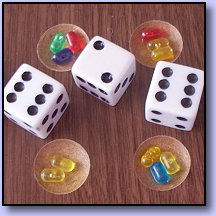 Mancala and dice, pictured on this page, represent two ends of the spectrum in terms of the characteristics of games. Mancala
games are games of skill, especially in math/counting and strategic thinking, while dice games are primarily ones of chance. Mancala and dice, pictured on this page, represent two ends of the spectrum in terms of the characteristics of games. Mancala
games are games of skill, especially in math/counting and strategic thinking, while dice games are primarily ones of chance.
Mancala, a game of counting and calculation, is believed to have originated on the African continent where it is played under
many different tribal names (wari, gubeta, owela, etc.). Mancala game boards dating from 1400 B.C. have been found in Egyptian sites at Luxor and Memphis, and some historians believe it "spread from Egypt through Africa, probably with traders
moving up and down the Nile. In the Middle Ages mancala games spread through the Middle East . . . and Southeast Asia, [and] later African slaves brought it to the Caribbean." (Wilkins)
Basic Mancala boards have two rows of six holes (called pits) with larger holes at each end for the storage of captured
pieces (counters, called pebbles or seeds). An equal number of counters are placed in each hole to begin with, then moved in and out of the pits by certain rules. "The object of the game is to accumulate as many pebbles as possible in the
scoring pit [mancala] on each player's right. . . Traditionally, the play of Mancala, at least in Africa, [has been] a social activity, to which bystanders contribute . . . but there is also a religious dimension to the game . . . It is played in
the Houses of Mourning to amuse the spirits of the dead awaiting burial" (Parlett). Author Parlett also refers to the game as one of "perfect information, perfect equality, much freedom of significant choice, and hence great skill."
Astragali, or the knucklebones of sheep (see the "Jacks" information on the News page), are considered by many to be the percursors to
dice. Mesopotamia, or the area between the Tigris and Euphrates Rivers in modern Iraq, is considered by anthropologists to be the place in which modern urban society originated. According to one author, "Archaeologists have discovered astragali in all
periods of Mesopotamian history." (Schwartz) Although their early uses (as with two-sided objects such as pebbles, bones or seeds in other cultures) may have involved some type of divination, assigning numerical values to the different sides of the astragali evolved
into their use as counters, or early dice.
Six-sided dice have been found among ancient relics in Egypt, the Mediterranean and the Far East. (Encyclopaedia Britannica) The earliest six-sided
dice date from about 3000 B.C. "Nearly all dice use pips (dots) and not numerals to indicate value, probably because the form of dice was fixed around 1300 B.C., far earlier that the development of the Hindu-Arabic system of numbers, which originated around
700 A.D. . . [meaning] dice are older than numbers." (Schwartz)
Dice have been found in almost all early and indigenous cultures, and many of the oldest gambling games involved dice. In some cases, as noted in
the "Chess" information in the Essays section, religious objections and proscriptions on gambling and the element of chance forced the elimination of the use of dice. In other times, with elements of chance omitted, games of pure skill like
Chess, Checkers and Go developed.
Reference Sources:
Craig, Steve. Sports and Games of the Ancients, Westport, Connecticut: Greenwood Press, 2002.
Encyclopaedia Britannica, 1953 Edition.
Parlett, David. The Oxford History of Board Games, Oxford/New York: Oxford University Press, 1999.
Scarne, John. Scarne's Encyclopedia of Games, New York: Harper and Row Publishers, 1973.
Scarne, John. Scarne on Dice, Harrisburg, PA: Stackpole Books, 1962.
Schwartz, David G. Roll the Bones: The History of Gambling, New York: Gotham Books, 2006.
Wilkins, Sally. Sports and Games of Medieval Cultures, Westport, Connecticut: Greenwood Press, 2002.
|




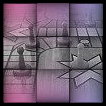

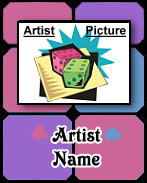

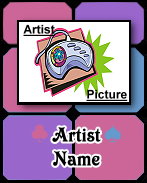

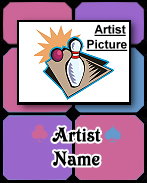



 Mancala and dice, pictured on this page, represent two ends of the spectrum in terms of the characteristics of games. Mancala
games are games of skill, especially in math/counting and strategic thinking, while dice games are primarily ones of chance.
Mancala and dice, pictured on this page, represent two ends of the spectrum in terms of the characteristics of games. Mancala
games are games of skill, especially in math/counting and strategic thinking, while dice games are primarily ones of chance.